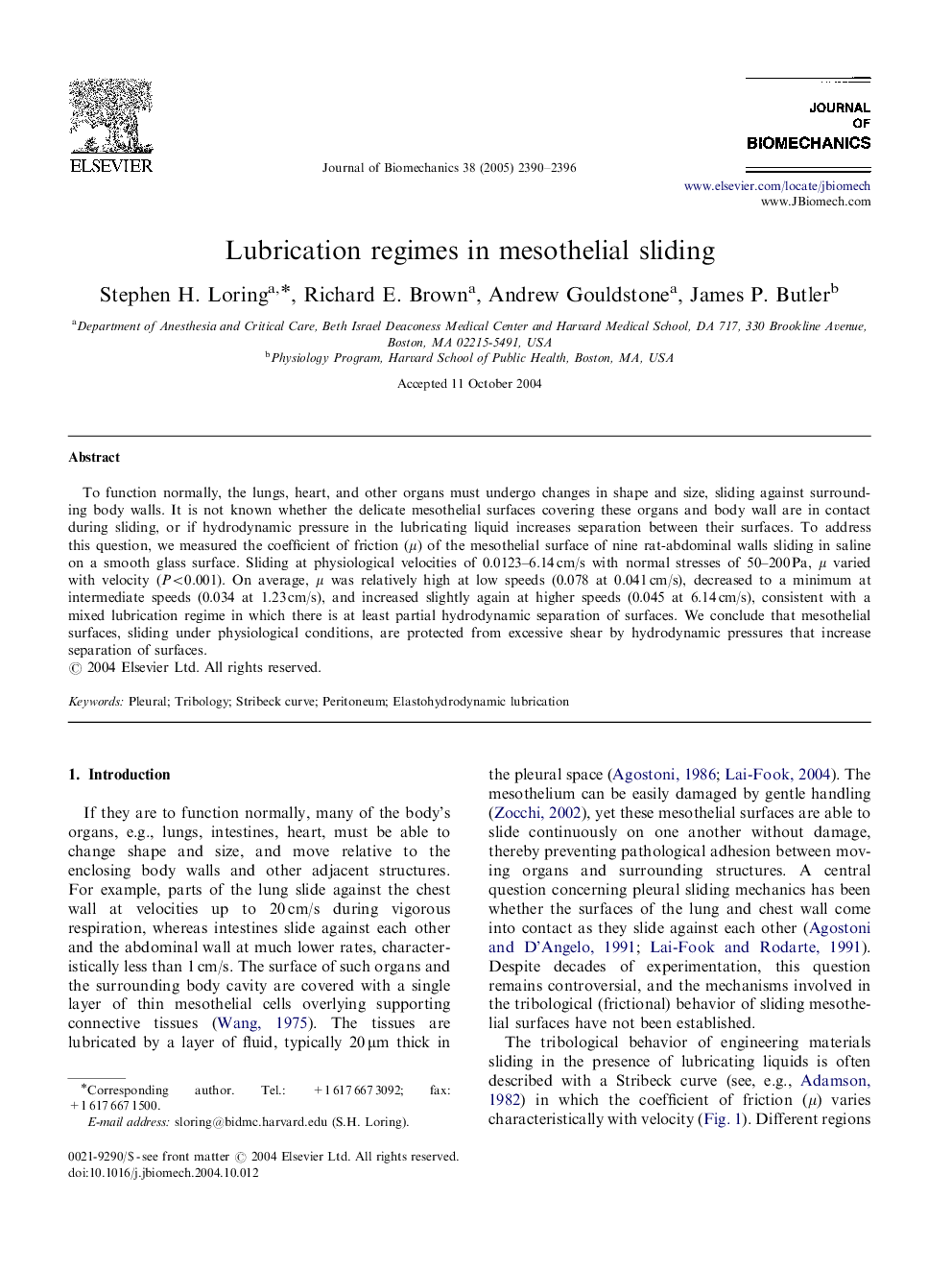| Article ID | Journal | Published Year | Pages | File Type |
|---|---|---|---|---|
| 875213 | Journal of Biomechanics | 2005 | 7 Pages |
To function normally, the lungs, heart, and other organs must undergo changes in shape and size, sliding against surrounding body walls. It is not known whether the delicate mesothelial surfaces covering these organs and body wall are in contact during sliding, or if hydrodynamic pressure in the lubricating liquid increases separation between their surfaces. To address this question, we measured the coefficient of friction (μμ) of the mesothelial surface of nine rat-abdominal walls sliding in saline on a smooth glass surface. Sliding at physiological velocities of 0.0123–6.14 cm/s with normal stresses of 50–200 Pa, μμ varied with velocity (P <0.001). On average, μμ was relatively high at low speeds (0.078 at 0.041 cm/s), decreased to a minimum at intermediate speeds (0.034 at 1.23 cm/s), and increased slightly again at higher speeds (0.045 at 6.14 cm/s), consistent with a mixed lubrication regime in which there is at least partial hydrodynamic separation of surfaces. We conclude that mesothelial surfaces, sliding under physiological conditions, are protected from excessive shear by hydrodynamic pressures that increase separation of surfaces.
